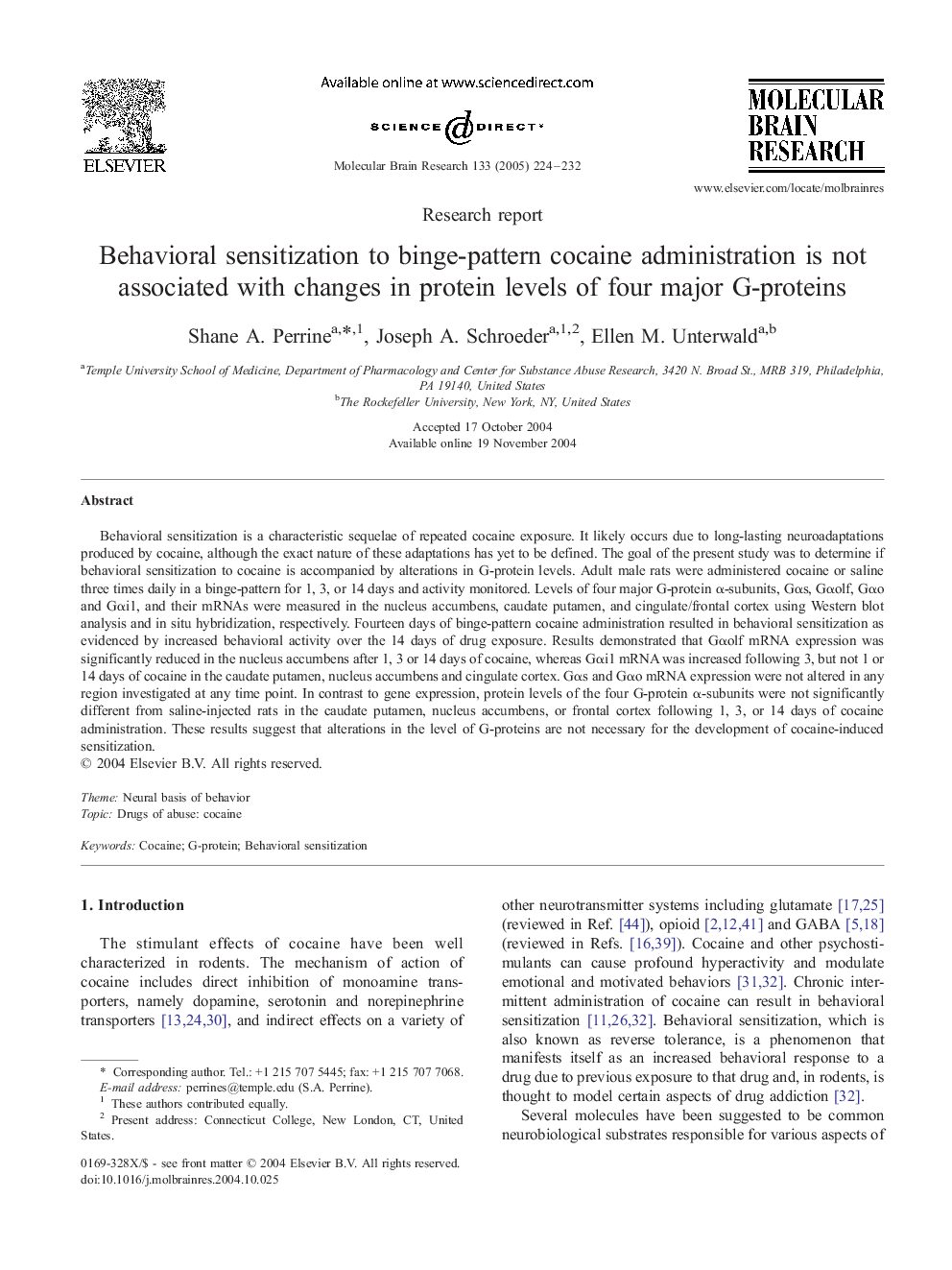| Article ID | Journal | Published Year | Pages | File Type |
|---|---|---|---|---|
| 9410797 | Molecular Brain Research | 2005 | 9 Pages |
Abstract
Behavioral sensitization is a characteristic sequelae of repeated cocaine exposure. It likely occurs due to long-lasting neuroadaptations produced by cocaine, although the exact nature of these adaptations has yet to be defined. The goal of the present study was to determine if behavioral sensitization to cocaine is accompanied by alterations in G-protein levels. Adult male rats were administered cocaine or saline three times daily in a binge-pattern for 1, 3, or 14 days and activity monitored. Levels of four major G-protein α-subunits, Gαs, Gαolf, Gαo and Gαi1, and their mRNAs were measured in the nucleus accumbens, caudate putamen, and cingulate/frontal cortex using Western blot analysis and in situ hybridization, respectively. Fourteen days of binge-pattern cocaine administration resulted in behavioral sensitization as evidenced by increased behavioral activity over the 14 days of drug exposure. Results demonstrated that Gαolf mRNA expression was significantly reduced in the nucleus accumbens after 1, 3 or 14 days of cocaine, whereas Gαi1 mRNA was increased following 3, but not 1 or 14 days of cocaine in the caudate putamen, nucleus accumbens and cingulate cortex. Gαs and Gαo mRNA expression were not altered in any region investigated at any time point. In contrast to gene expression, protein levels of the four G-protein α-subunits were not significantly different from saline-injected rats in the caudate putamen, nucleus accumbens, or frontal cortex following 1, 3, or 14 days of cocaine administration. These results suggest that alterations in the level of G-proteins are not necessary for the development of cocaine-induced sensitization.
Related Topics
Life Sciences
Neuroscience
Cellular and Molecular Neuroscience
Authors
Shane A. Perrine, Joseph A. Schroeder, Ellen M. Unterwald,
